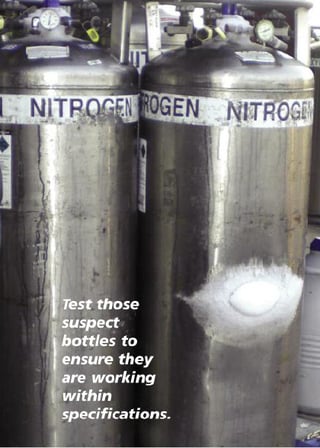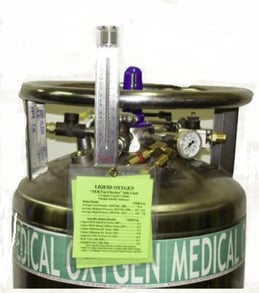How to tell if you have a bad vacuum on your dewar
There are many simple malfunctions that can lead a distributor to believe that a liquid cylinder may have a bad vacuum or other significant problem, resulting in either costly repair bill or the liquid cylinder being removed from service for an extended period of time, until a proper diagnosis can be made. Often times, these assets unnecessarily sit idle for an indefinite period of time, when in many cases a simple, inexpensive repair is all that is required.

Two Ways to Check for a bad Vacuum
Good Option:
The first step in ruling out a vacuum problem is to check the vacuum integrity of the liquid cylinder.Traditional NER (Normal Evaporation Rate) testing requires the distributor to fill the liquid cylinder, record the weight of the product, wait 24 hours, record the weight of the product again, determine the amount of product loss after 24 hours, calculate that percentage and then compare it against the manufacturers published NER percentage.
Best Time Saving Option:
Many distributors do not have the time, tools or resources in order to effectively accomplish such testing.This testing can be simplified by using a "Vacuum Meter ". This tool is essentially a flowmeter that is specifically designed and calibrated for measuring and weighing product vapor (gas) escaping from the liquid cylinders vent valve and indicating a "Poor or Failing", "Good" or "Excellent" vacuum integrity. This process does not require a scale and can be done in a fraction of the time required for a traditional NER test.
Get your staff trained, top-end dewar repair classes are available from Ratermann Manufacuturing!
A bad vacuum doesnt have to be a mystery anymore. Save money and time by having a staff that knows how to identify and repair dewars at your facility. Request more info If you want to train your employees on how to repair your own dewars and save company time and money, we will respond within 24 hours.
Click here to see what you will learn in our hands on dewar repair class





